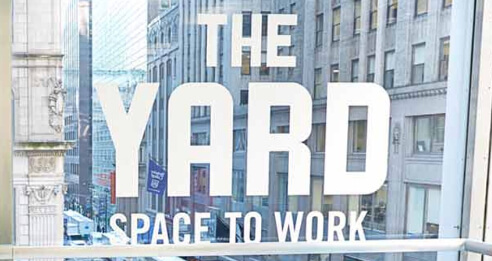
Largest Coworking Companies


“Great place, amazing decor with old barn wood... Unlike many other spaces, there are many windows so the natural lighting is fantastic.”
This is a part of an actual review of The Farm SoHo, a New York-based coworking space, written by a user named Ceymishan Arslan. I love reviews like this because they go a little bit deeper than thanking the venue and promising to return soon.
In his review, Arslan lists a number of things that he liked about that particular coworking space, including decor elements and large windows that allow a lot of sunlight in. It’s a scientifically proven fact that natural light is a better option than artificial because it reduces the risk of eye strain and migraines.
This means that the designers have done a great job doing their homework to make sure that the coworking member will have enough sunlight. As a result, a lot of potential clients of The Farm SoHo who have had complaints about a lack of natural light at their workplace will notice this advantage.
As you can see, this simple example of a review can make a difference for many freelancers and entrepreneurs looking for a great coworking space. In this article, let’s talk about how coworking space designers can improve the experience of their customers.
The great Steve Jobs famously said,
“Design is not just what it looks like and how it feels. Design is how it works.”
This is an excellent summary of how a user-centered design should work, which, of course, applies to coworking spaces. Comfortable cushions, colorful walls, and other decor elements are great, but the thinking behind the whole design of a coworking space should be focused on making people’s experience as great as it can be.
That’s why people like Arslan mention lighting in their review.
Lighting matters to them. And since it matters to them, it should matter to you.
It’s one of the elements that ensure the best possible experience for them. It’s possible that many people will be willing to pay more to be there and do what makes them feel accomplished and happy.
With that in mind, these tips will guide you through the most important things to increase the benefits of coworking spaces with a customer-centered design.
We know already that natural light is better than artificial, and many of your potential clients are looking for coworking spaces that provide it. In fact, it’s not common for people to end their membership at coworking spaces because of the lack of natural light.
During the design selection stage, try different layout options and consider going with the one that ensures a lot of natural light. If possible, install large windows (roof windows are an option, too) that let sunlight in. If your design includes a large middle room or hall, do your best to provide abundant natural light, as it affects productivity and even the mood of your customers.

However, remember to provide appropriate artificial lighting, too (that includes mobile lights), especially in areas designed for conferences and meetings.
Coworking Space Management Guide
A comprehensive guide to help you manage your coworking space.
DownloadCoworking by its definition means collaboration and community. This doesn’t mean that you should get a lot of people in the same area and hope that they find a good place to get their jobs done. An open area in a coworking is an essential area where groups of people can brainstorm, have discussions, and otherwise collaborate.
For example, depending on the size of the open area, you can install one or multiple round tables, long banquet style tables, or a bunch of loungers to encourage interaction. Having more private workstations nearby would be a great idea, too, as someone from the group may prefer to work alone until they have something to share with the entire group.
More design elements to keep in mind:
There should be smaller offices in your coworking spaces, too. With the number of people visiting coworking spaces increasing rapidly, it’s important to accommodate different working styles and ensure private workstations.
Separate private offices with glass walls but provide the opportunity to increase privacy with blinds. “Make sure that office walls are minimum 10 mm thick,” says Sam Rowe, a translator from Pick Writers, who is also a frequent user of coworking spaces. “This provides sufficient soundproofing needed for meetings.”
A kitchen is a must for a winning coworking space. In addition to having quality coffee, snacks, and fruit to help your visitors get the energy they need to work, consider the following kitchen design tips:
Any coworking space has an area where everyone goes to unwind after a period of working their tail off. It’s called “a relaxation area” or something like that, and the name pretty much says it all: the goal is to provide coworking visitors with a space to relax, talk with friends or colleagues, or have informal meetings.
Here’s what to keep in mind:
If the area for the relaxation zone is small, consider hiring a planning expert to maximize the use of space. Simply stuffing a lot of furniture is not a good idea and can hamper productivity and comfort.
How to Start Planning a Coworking Space
With these customer-centered coworking design tips, you’ll approach building your business with the right mindset. As you start planning, make sure to follow this strategy to arrive at the final design of your coworking space:
Save your community manager 41 hours each week—learn how The Yard did it with cloud-based access control.
Read the Case Study2020 Global Coworking Growth Study
Find the latest U.S. and international coworking statistics!
Free access to our best guides, industry insights and more.
